昨天,我介绍了《纽约时报》的长篇报道《中国的污染已经到了极限》,文中提到了一个叫做 Shangma Huangtou的村庄。
为了查找这个村庄的中文名,我搜索了Google,结果意外发现早在一年前《纽约时报》就发表过一篇特写,将这个村庄的悲惨命运,展示在全世界面前,读来令人心酸。
下面就是中英对照的《纽约时报》全文,文后附有照片。请先读完报道,再看照片。
========================
一个被煤矿埋葬的中国村庄
The Not So Good Earth
作者:DAVID BARBOZA
原载于2006年6月23日《纽约时报》
When Wei Yong returned home to his ancestral village last year to visit his 77-year-old mother, he heard about the tremors. Late one night, the residents told him, the village was rocked by what everyone thought was an earthquake. The ground shook. The houses trembled. And the earth cracked open.
魏勇(译音)在2005年返回他出生的小村庄探望77岁的母亲时,听到了大地的颤动声。村里人告诉他,有一天深夜,整个村子都在摇动,所有人都认为发生了地震。大地在颤动,房子在摇晃,土地裂开缝隙。
"Liu Run told me her walls were about to cave in," Mr. Wei said. "My sister says everywhere is sinking. She won't even let the dog roam free at night."
魏勇说,邻居告诉他,她家的墙已经塌了。姐姐告诉他,当地所有的地方都在下沉,她甚至晚上都不敢把狗放出来。
There was no earthquake, however. Instead, here in this small village in the central province of Shanxi, three large coal mining operations had been burrowing underground for coal -- day and night, sometimes with dynamite. And from far below, they had cracked the earth.
但是这不是地震。这个山西中部的小村庄旁有三个大型煤矿,它们一直在地下不分日夜地挖煤,有时甚至还要用上炸药,从地下炸开大地。
The village of Shangma Huangtou is just the latest victim of a coal mining boom that is devastating large swaths of north China, where some of the nation's richest coal deposits lie. China is the world's largest producer of coal, and much of it is mined here.
上马黄头村只是兴旺的煤炭工业正在大面积地破坏中国北部自然环境的最新一个受害者,那里储藏着这个国家最丰富的煤炭资源。中国是全球最大的产煤国,其中绝大多数煤炭都出自山西省,出自上马黄头所在的朔州地区。
While Shanxi provides the fuel that powers China's sizzling economy, thousands of acres of land are sinking because of the ravages of underground coal mining.
然而,在山西省向中国高速发展的经济提供燃料时,由于煤矿对地下的破坏,导致当地土地正在大面积下沉。
Moreover, coal fires are burning uncontrollably below ground here and through much of northern China, adding to global warming by releasing huge amounts of carbon dioxide into the atmosphere.
此外,煤炭毫无控制地在地下自燃,释放出大量的二氧化碳,也正在给全球气候变暧"火上浇油"。
Each year, scientists say, about 200 million tons of coal -- more than was burned in all of Japan last year -- are consumed by raging underground fires that are sometimes started by lightning and sometimes ignited by mining accidents.
科学家们说,每年约有2亿吨煤炭因雷电和矿井事故而在地下被烧掉,这个数字相当于日本去年一年所消耗的煤炭。
Environmental experts call Shanxi a wasteland. The people of Shangma Huangtou call it a home they no longer cherish.
环保专家称山西是一个荒原。而上马黄头村的村民,称它是个不再被珍惜的家园。
Indeed, the tremors here have not stopped, residents say. And so after years of suffering with increasingly foul air and sandstorms fed by a growing man-made mountain of coal waste, now 50 stories high, created from an open pit mine, the residents say they have had enough. They have petitioned to leave this village.
当地村民说,其实土地的晃动从来没有停止过。在忍受了多年的日渐恶劣的空气,以及由废煤和矿渣堆起的垃圾山引发的沙尘暴后,当地人说他们无法再忍受下去,他们已请愿要离开家园。
"People at my age don't like to move to a new place," said Wei Yangxian, 71, as he stood by the village road. "But we have no choice. We have no water. The earth is sinking. The air is poisoned. And there's that big man-made mountain."
站在村里土路上的71岁老人魏阳献(译音)说:"象我这样上了年纪的人,不喜欢搬到一个新地方。可我们没有办法,我们这里没水,土地正在下沉,空气也被污染了,因为这里有一座人工造出的煤山。"
The problem is that the village is surrounded. Coal mines on the north and south side have already tunneled under the village; a huge chemical factory, just 650 yards west of the village, has fouled the air; and dust from the man-made mountain on the east side slams into the village daily.
上马黄头村所面临的问题是,几个矿井已从地下的南部和北部穿过这个村子,村子西边几百米处还有一个大化工厂,污染着当地的空气,村东边那座人造的煤渣山,不断吹来沙尘。
"When I cook," said Liu Runhua, 54, "I even get sand in the food."
当地一名妇女说,在她做饭时,都能从饭里找到沙子。
All night long, residents here say, trucks carrying coal waste dump it off the side of the mountain. And all day long trucks overloaded with coal rumble past the village, cracking the roads and spraying coal waste on road-side homes.
当地村民还说,每天晚上一整夜都能听到卡车把废弃物倒在东边的煤渣山上,白天则是运送煤炭的大卡车经过村子,卡车压坏了道路,路旁撒满了废煤。
Indeed, not long ago residents here grew so angry that they blocked the road that passes through town by forming huge dirt mounds as a makeshift barricade against coal-bearing trucks.
不久前,越来越愤怒的村民,曾用障碍物堵住了道路,不让运送废弃物的卡车通过。
The government has done little. Xu Gang, a government spokesman, called moving the village people "impossible" and added that the complaints seemed motivated mostly by an effort to seek compensation. "I think they only do this for money," he said.
而当地政府却做得很少,政府发言人称,村民们想搬家是"不可能的",还说村民们的抱怨主要是想多得到一些赔偿,"我认为他们这样做只是为了钱,"发言人说。
But one of the men fighting to save the village is Mr. Wei, 47, a former government official and the village's favorite son, the first to leave for college in the 1970's.
但是,47岁的魏勇却是为了挽救这个村子而进行着抗争。他曾经当过公务员,早在上个世纪70年代考上大学,第一次离开上马黄头村。
Mr. Wei, a jovial man, knows something about the environmental destruction coal mining can inflict on the land. He himself is in the coal-mining business in northern China.
快人快语的魏勇对煤矿破坏自然环境有些了解,因为他本人曾在内蒙古搞过煤矿。
"My biggest coal mine is in Inner Mongolia," he said. "But there are very few people in Inner Mongolia. Shanxi Province has people everywhere. The coal mining goes on right in the middle of a huge population. And nobody cares about the environment."
魏勇说:"我干过的最大煤矿是在内蒙古,但那里人烟稀少,而山西却遍地都是人,这里的煤矿正从人口稠密区穿过,却没有人关心这里的环境。"
When Mr. Wei was a young boy growing up here in the 1960's, he said, Shangma Huangtou was a village of about 500 people set up against the hills, with corn and soybean farms and a stream running through the middle of the village.
魏勇说,60年代的时候,当时他还是一个小男孩,这里是一个山脚下的小村庄,住着500口人,有种植玉米和大豆的农场,一条小河从村子中央流过。
"I remember you could drink from that stream," Mr. Wei said.
"记忆中小河里的水可以直接饮用。"魏勇说。
Everyone here talks about the stream.
这里每个人都在谈论这条小河。
"When I was young this stream was very clear," said Lin Youmao, the village's elected chief. "We could find fish and shrimp in this little river. And we could swim in it."
村长林友茂说:"我年轻的时候,这条小河非常干净。我们可以在里面抓到鱼虾,还可以在里面游泳。"
In the early 1980's, however, when China was just waking from its long economic slumber, the village turned into a coal mining town after rich deposits were found in the area.
上个世纪80年代,当中国经济刚刚苏醒时,由于上马黄头所在地区被发现储藏着丰富的煤炭,这个村子立即变成了一个煤矿城。
Armand Hammer, the American industrialist and the founder of Occidental Petroleum, formed one of China's first joint ventures here in north China. In 1982, his company signed an agreement to create a huge open-pit coal mine in Shanxi Province, which had just been designated as the nation's new energy base.
美国著名工业家、西方石油公司创始人阿曼德.哈默(Armand Hammer)先生也就是在这里成立了中国第一个合资企业。1982年,哈默的公司签署了协议创建中国最大的露天煤矿,随后这里便变成了中国的新能源基地。
The mine was created about a mile east of the village. And when the new project broke ground, residents recall, Mr. Hammer flew in by private jet and Prime Minister Li Peng came for the ceremony.
哈默的平朔安太堡露天煤矿,距离上马黄头村只有几英里远。村民们回忆说,当这个项目开挖时,哈默乘坐他的私人飞机来到这里,当时的中国总理李鹏也出席了开工仪式。
Years later, Mr. Hammer pulled out of the project, unhappy with its progress. But the An Tai Bao open-pit coal mine continued to grow, scooping up millions of tons of coal and piling mountains of coal waste next to the village.
后来,由于对这个项目的进展感到不满,哈默就撤出了,但安太堡露天煤矿却仍在继续发展,挖出了几百万吨的煤,堆起了村庄旁边的煤渣山。
Every year, residents say, the mountain grew taller. And every year it crept closer to the village. By the 1990's, the mine was operating around the clock. Today, the mountain stands about 500 feet tall and covers more than 30 square miles of land.
当地居民说,安太堡露天煤矿每年都在往煤渣山上倾倒大量废煤,山头每年都在升高,而且山脚越来越接近村子。整个九十年代,这座煤矿都一天24小时开工。现在,煤渣山已有500英尺高,占地面积超过30平方英里。
At the An Tai Bao Mine, hundreds of Caterpillar trucks, many of them larger than a house, line up every day to carry earth and coal waste up a winding path to the mountain top, where it is dumped onto the pile.
安太堡煤矿拥有数百辆Caterpillar巨型卡车,其中许多卡车都要比房子还大,这些庞然大物每天都排着队,从巨大的深坑中爬出来,沿着弯曲的道路,开到煤渣山顶部,将废煤倾倒在那里。
Complaints flow easily. Liu Runhua took a visitor to her home and pointed at the cracks in her new house. "Take a look at these gaps," she said.
当地村民的抱怨随处可见,一位名叫刘兰华(译音)的村民将客人领到家中,指着她家新房墙壁上裂开的大缝说,"看看这些裂缝吧。"
Another resident, Wei Yangxian, said: "If you had come five days earlier you would have seen a sandstorm blanketing our village."
另一位村民说,如果你们 5天前来,就能看到整个村子都被一场沙尘暴给覆盖了。
Wei Futang, 63, a former coal miner, spoke up: "Beautiful land should have two things -- water and mountains. Without water a beautiful village can turn ugly very fast."
63岁的魏福堂(译音)说,美好的家园应该有山有水,一个漂亮的村子没有水可能很快就会丑陋起来。
Today, Shangma Huangtou has no water. Villagers say the stream running through here dried up 10 years ago. Now, the wells have run dry, too. It used to be that every household had a well; now the village hires a truck to fetch water from a mile away.
然而,今天的上马黄头却已没有了水。村民们说村里的小河,10年前就已干涸了。现在,这里的水井也没水了。以前村民每家每户都有一口水井,如今村里只能雇一辆卡车,从几里外往回拉水。
But people here mostly talk about the possibility that the huge slag heap of a mountain will come crashing down and simply bury the village.
但村民们谈论最多的还是那个巨大的煤渣山,担心有一天倒塌下来,把整个村子埋没。
That is what happened in Wales in 1966, when a huge pile of coal waste tumbled down on the village of Aberfan, crashing into an elementary school and killing 116 schoolchildren.
1966年威尔士就曾发生过这样的事故,当时巨大的矿渣场在坍塌后冲向阿伯凡(Aberfan)村中的一个小学,造成116名学生死亡。
And that is what happened in Richard Llewellyn's best-selling 1939 novel "How Green Was My Valley," also the story of a Welsh village destroyed by coal mining.
同样的事故也曾出现有威尔士作家卢埃林 (Richard Llewellyn)1939年的畅销书《青山翠谷》中,描述了一个村庄被矿井毁掉的经过。
The people here don't know those stories. But they can sense them.
不过,上马黄头村的居民却不知道这些故事,可他们能够感觉到这样的悲剧将会发生在自己身上。
"There are three coal mines surrounding the village and only one road out," said Mr. Wei, who has pleaded with his mother to leave the village.
魏勇请求他的母亲搬离这个村庄,他说:"这里周围有三个煤矿,却只有一条路通向外界。"
The village chief likes to wander the farmlands to measure the huge fissures in the earth. He says a body was buried here a few years ago, but after the ground shifted, relatives came to recover the body and move it to more stable land. They never found it.
村长喜欢在农田里散步,观察那些大地上巨大的裂缝。他说,好几年前有个死人埋在这里,后来地裂开后,死者的亲戚赶来寻找尸体,准备将坟墓搬到更安全的地方。但是,他们再也没有找到过那具尸体。
"Look at this sinking," he said, surveying the sloping, tilted farmland. "Two years ago this land was flat. Now look at it."
"看看这些裂缝,"他指着四分五裂、高低不平的土地说:"二年前,这块地还是平的。可是现在,你看它是什么样。"
At a town meeting here a year ago, the villagers gathered and decided they had to move before the village is sucked under.
一年前,在一次村务会议上,村民们聚集起来,决定在村子沉入大地之前,他们必须搬离这里。
Some residents later talked about the village's founding myth, an old fable about how the beautiful village was founded in ancient times with a small lake in its center. But one day, according to the fable, a smart man from southern China came and stole the village frog, bringing ruin to Shangma Huangtou.
后来,一些村民提到了关于这个村子如何建立的传说。古老的传说中,这个美丽的村子依湖而建。但是有一天,一个南方人潜入村庄,偷走了村子里的青蛙,从此给这个村庄带来毁灭。
"I don't believe this myth," Mr. Lin, the village chief, said. "I believe there's no water because of the coal mines. The earth is like the human body. And the water is like the blood in your veins. But now there's no water; no blood."
"我不相信这个传说,"林村长说:"我相信这里没有水,是因为建起了煤矿。大地就像人的身体,水就像血管中的血液。现在这里没有水了,就等于人没有血液了。"
=================================
[相关图片]
Victims of a Coal Boom
煤价上涨的牺牲品
1.
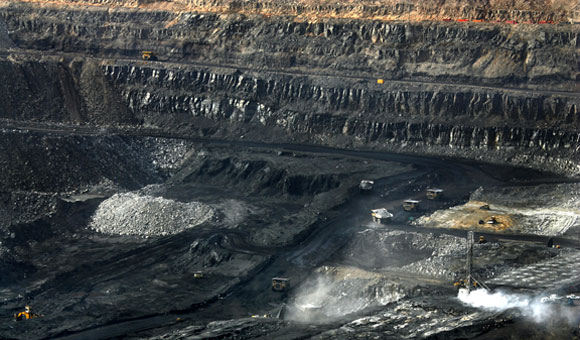
A coal mining boom has swept across north China.
煤炭行业的繁荣,在华北到处可见。
2.
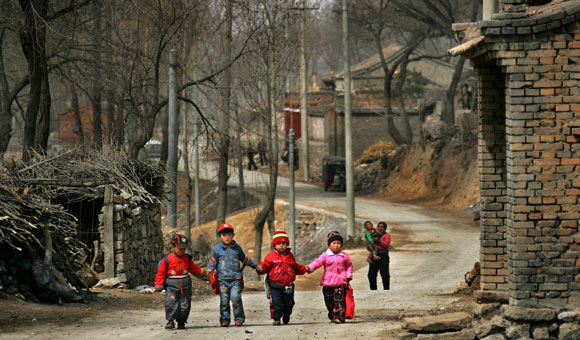
Coal mining operations have been burrowing beneath the village of Shang Ma in Shanxi Province.
山西省上马村的地下正在被挖空。
3.
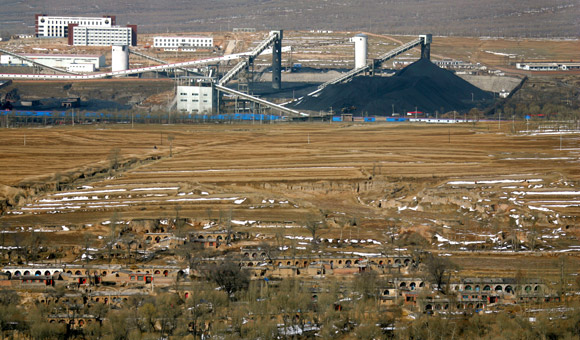
The mining beneath Shang Ma, in the foreground, cracked the earth and caused tremors.
照片的前部就是上马村,背景是巨大的煤矿设备,它们挖开大地,引起地震般的颤动。
4.
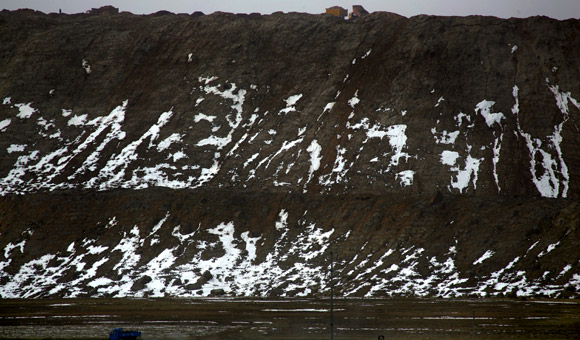
The mines have piled mountains of coal waste just next to the village.
村子旁边就是许多座煤渣山。
5.
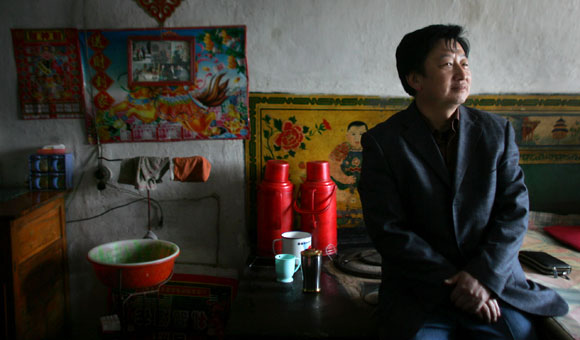
Wei Yong, a former government official and the village's favorite son, is fighting to save Shang Ma.
魏勇是这个村子最有出息的孩子,他在政府里干过,现在正在努力抗争,希望能够挽救这个村子。
6.
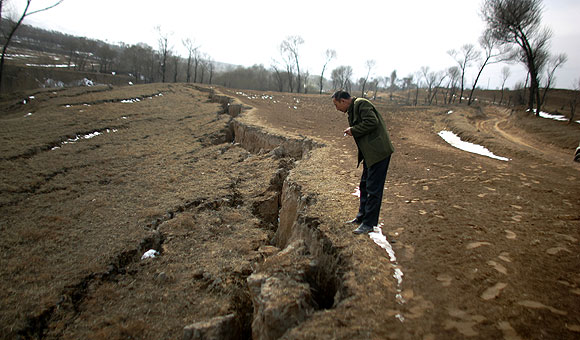
The mining has created huge fissures through the village.
村子里到处都是采煤造成了土地开裂。
7.
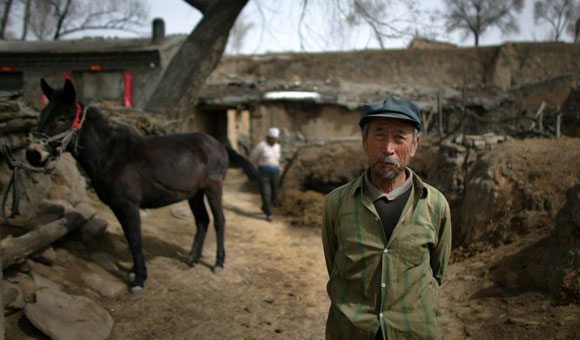
Tremors damaged the house of Wu Qiang, a village elder.
吴强老人的房子已经被震坏了。
8.
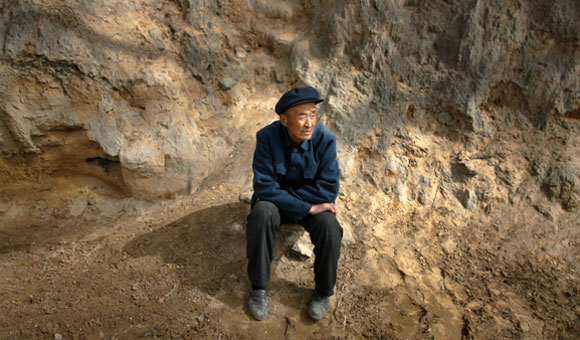
A stream used to run through the village. Today, it has no water.
以前,一条小河流经全村,现在它已经没有水了。
9.
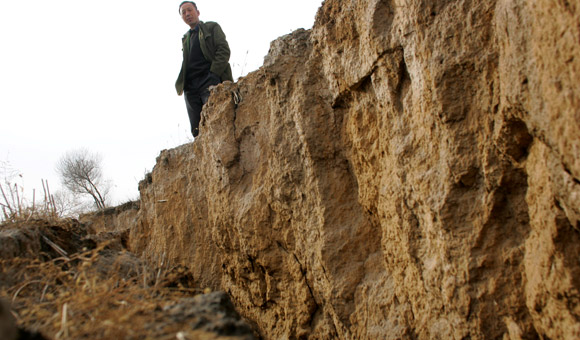
Lin Youmao, the village's elected chief, often measures the cracks in the earth.
林友茂是选举出来的村长,他常常去查看地上的那些裂缝。
10.
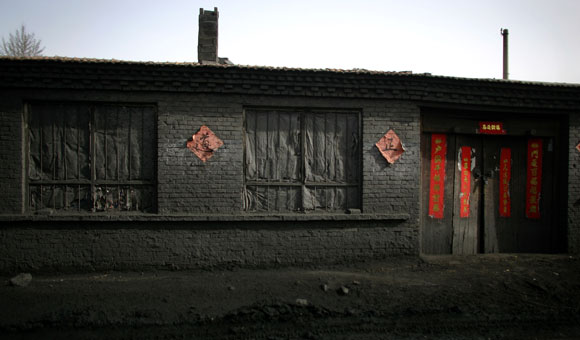
Residents are suffering with increasingly foul air and sandstorms created by the man-made mountain of coal waste.
村子旁的煤渣山,使得这里的空气都有毒,还经常引发沙尘暴。村民们就是在这样的环境中生活。
11.
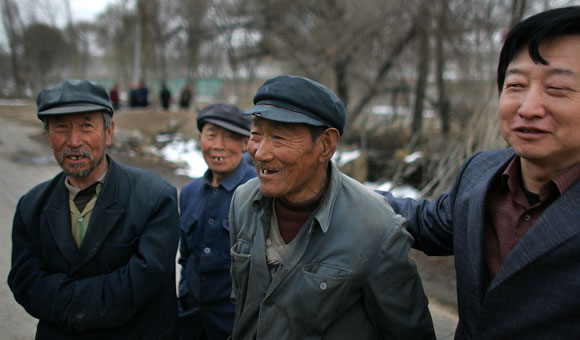
Elders contantly talk about the possibility that the mountain will come crashing down and bury the village.
老人们经常讨论,总有一天煤渣山会倒塌,将这个村子埋葬。
12.
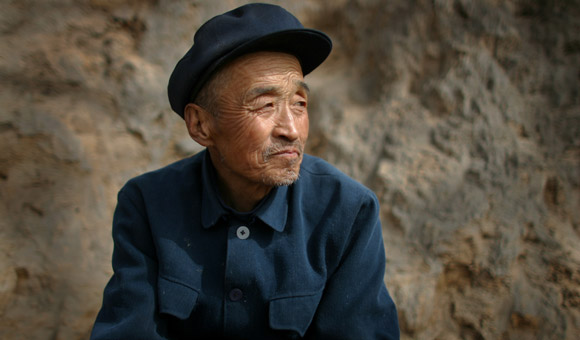
Enviormental experts call Shanxi a wasteland.
在环境专家眼里,山西省已经沦为了一块荒地。
13.
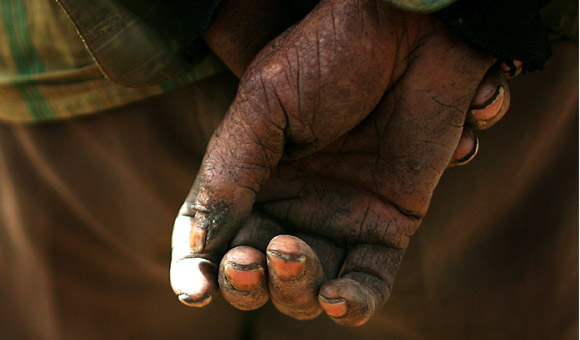
Residents are trying to move before another tremor sucks the village under.
村民正在设法搬离这里,以免下次地震到来的时候被活埋。
(完)

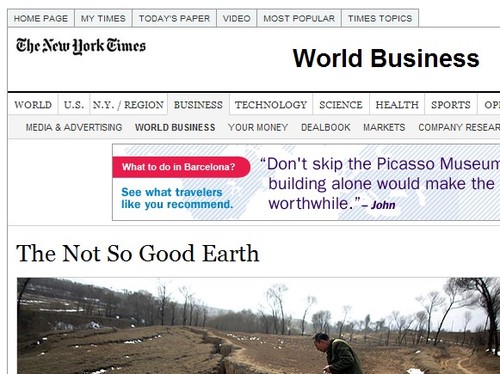

土豆 说:
我们的政府是怎么了?
PX项目与仙林
让人心惊胆战的现实:
[转贴]PX全称“对二甲苯” (Dimethylbenzene),属危险化学品和高致癌物,而且遇氧只需27摄氏度就会爆炸。
受到对二甲苯蒸气的慢性中毒能够引起神经错乱、头痛、嗜睡、作呕、血液组成起变化。 人吸入71.4g/m3短时致死
南京px项目的位置在离南京市中心大约20公里的栖霞山附近(国际组织规定这类项目要在距离城市100公里外开发!),也就是南京炼油厂的厂区里面,距离长江不到1公里,一旦发生问题,南京下游的居民饮水就发生问题,离此装不到1公里的地方,就是我们南京市民每年金秋最喜欢去栖霞山,此装置离现在的仙林大学城,不到3公里,炼油厂的生活区里面,有幼儿园,小学,中学,大学,成人教育学院,职工培训中心,和范围很大的家属区,附近有栖霞镇,尧化镇等等,国家经济开发区——新港也就2公里左右,我在想假如发生什么问题,是多么可怕的事情,和厦门比起来,南京的px项目更可怕,这种剧毒化工产品一生产,南京意味着放了一个原子弹,南京人民以后的生活将在白血病、畸形儿中度过。
健康危害
侵入途径:吸入、食入、经皮吸收。
健康危害:二甲苯对眼及上呼吸道有刺激作用,高浓度时对中枢神经系统有麻醉作用。
急性中毒:短期内吸入较高浓度核武器中可出现眼及上呼吸道明显的刺激症状、眼结膜及咽充血、头晕、恶心、呕吐、胸闷、四肢无力、意识模糊、步态蹒跚。重者可有躁动、抽搐或昏迷,有的有癔病样发作。
慢性影响:长期接触有神经衰弱综合征,女工有月经异常,工人常发生皮肤干燥、皲裂、皮炎。
海南和厦门的PX项目都已经停建了!!!!难道南京就没有认识到这个的严重危害吗
在一个BBS上看到了关于PX与仙林版块的文章,上网查了一下,发现了问题的严重性。西祠东升工作室等网站上的帖子已经被删了,但是被删的只是文字,不能删除的是事实!!看看这两篇新闻:
【来源:南京报业网-南京日报】 时间:2006年05月18日11:58
南京日报报道(通讯员 朱辉)金陵石化公司投资近30亿元的60万吨/年化工原料生产联合装置——PX项目部分子项,日前通过中国石化股份公司基础设计审查,争取年内破土动工,预计将于2008年上半年建成。项目投产后将可满足PX等芳烃产品的市场需求,优化中石化内部及南京地区的资源,为地方经济持续发展提供强大动力。
随着“十五”计划的发展和在建250万吨/年柴油加氢精制、10万吨/年硫磺回收装置的全面建成,金陵石化原油综合加工能力将达到1350万吨/年,成为长江沿线规模最大的炼油企业。即将启动的60万吨/年PX项目,不仅可充分发挥金陵石化现有原油加工能力大和加工手段齐全的优势,为金陵石化化工的发展打下坚实的基础,同时通过调整产品结构,提高产品质量,降低生产成本,进一步提升企业的竞争能力和经济效益。
此外,该项目建成投产后,每年可稳定地向南京地区的石化企业提供多种市场缺口较大的化工原料,满足南京地区石化企业的生产需要,并可为这些企业节约大量原料运输成本,保证南京地区石化企业生产的稳定。
中国化工在线(www.chemsina.com)报道:外电报道,中石化金陵石化公司人士4月10日说,公司对二甲苯(PX)项目的开车可能要推迟到2008年后,原打算在2008年开车。这位人士没有说推迟的原因。
国家环保总局(SEPA)在2月份对项目作了检查,这不会对项目有影响。
公司将根据环保总局的推荐意见,采取必要的环保措施。
这一项目投资28.6亿元(3.57亿美元/2.951亿欧元),去年获得正式批准。公司打算在江苏南京建一套装置,生产约20万吨/年邻二甲苯(OX)和60万吨/年对二甲苯(PX)。
生产的邻二甲苯用于公司的邻苯二甲酸酐(PA)和邻苯二甲酸二辛酯(DOP)生产。对二甲苯卖给仪征化纤公司(YCFC),供精对苯二甲酸(PTA)装置使用。
YCFC打算在江苏仪征建第三套PTA装置,它的100万吨/年项目可能在2008年后开车。
CMAI咨询公司人士前些时候说,金陵项目的一个大障碍是离现有两家PX生产商太近,这两家公司是扬子石化和镇海炼化(ZRCC)。
ZRCC生产55万吨/年对二甲苯和10万吨/年邻二甲苯,已向仪征化纤公司提供原料。
05年吉林石化双苯厂爆炸,让俄罗斯人色变的就是PX!本来以为距离我们很遥远的东西,没想到就近在眼前。
是否在几代之后的中国人都成了废物,中国才能真正地关心自己的子民,而不是眼前的利益!
(此文章转载自http://cookcornucopia.spaces.live.com/Blog/cns!7E4208415DBE0F46!165.entry)
2007年9月 4日 17:13 | # | 引用
Wendy 说:
您好~
我关注您的blog有好几个月了,这是第一次留言
常常叹服于您广泛的涉猎、新颖的视角和深刻独到的见解
不仅感慨 原来可以通过如此多的途径去了解认知这个世界
语言是工具 文字是媒介 好奇心是动力
道义责任都不加掩饰的源自本能的良知...
由衷的敬佩
感谢您一直以来的笔耕不辍 充实了我的精神 触动了我的神经
希望在这里看到您更多更好的东西
秋意渐凉 愿阖府安康 梦梦都化作力量:)
2007年9月 5日 12:14 | # | 引用
魏一 说:
“魏勇”,看到这个名字吓我一跳,
我还以为我上媒体了,原来只是我的名字上了媒体!
2007年9月 5日 13:24 | # | 引用
Ruan YiFeng 说:
Wendy,谢谢你,我感到鼓舞。但愿我能做到你说的这些。
2007年9月 5日 23:05 | # | 引用
ppip 说:
好文章。感谢推荐。
2007年9月 6日 13:51 | # | 引用
paul 说:
The title is a parody of Pearl S. Buck's nobel prize-winning novel The Good Earth.
2007年9月 6日 21:24 | # | 引用
Ruan YiFeng 说:
哎呀,你一句点醒梦中人,我压根没想到The Good Earth,所以一直很纳闷原文为什么会起The Not So Good Earth这样的题目。
2007年9月 7日 00:16 | # | 引用
爱花儿 说:
当社会发展时,势必会有一些牺牲。但触目惊心的环境牺牲将是不可逆转的!
人们在利用赖以生存得自然之时,也在无情的为子孙后代毁灭者自然,饮鸩止渴!
阮生,可不可以也发表一些超级大国的例子,比如把污染垃圾运到发展中国家,为追求利润拒不签订《联合国气候变化框架公约》,无法处理的核污染废料都堆积在哪里?氧气工厂-热带雨林为何得停止不了消减的步伐?以及为何要针对中国这个刚刚起步的发展中国家,以五十步笑百步的姿态可以说世界气候变暖都是你高速发展惹得祸???
小女子不才,但也是十分欣赏你所提供的有关资料,也才会给你冠上“愤青”名号,好好珍惜!
2007年9月 8日 11:05 | # | 引用
文明人 说:
情节属实,我就是那个村子出来的人,村名正确的译名应该是上麻黄头。
牺牲环境换取巨大的经济利益,经济利益被瓜分,环境破坏的恶果却由当地不能分得任何煤炭开发利益的村民来承担,这是和谐社会的耻辱
2007年12月 8日 15:32 | # | 引用
hyper 说:
1
挨着宝藏生活的人反而一贫如洗
2
环境没人买单
2008年8月11日 22:41 | # | 引用
Mike 说:
文章很棒!怪像丛生,让我们有良知的80一代倍感痛心!!!
2009年4月24日 15:58 | # | 引用
Jing 说:
欲哭无泪
2009年5月 4日 16:52 | # | 引用
微蓝 说:
不知道南京的PX项目后续如何,我的家乡在南京的下游,听说从一两年前开始,因为化工污染,那里已经没有合格的水源提供饮用水,如今我的家乡人民所饮用的水,都是政府花钱从邻近的城市买来的,当然,我本人离开家乡多年,不知道这是否属实。
2009年5月 9日 15:01 | # | 引用